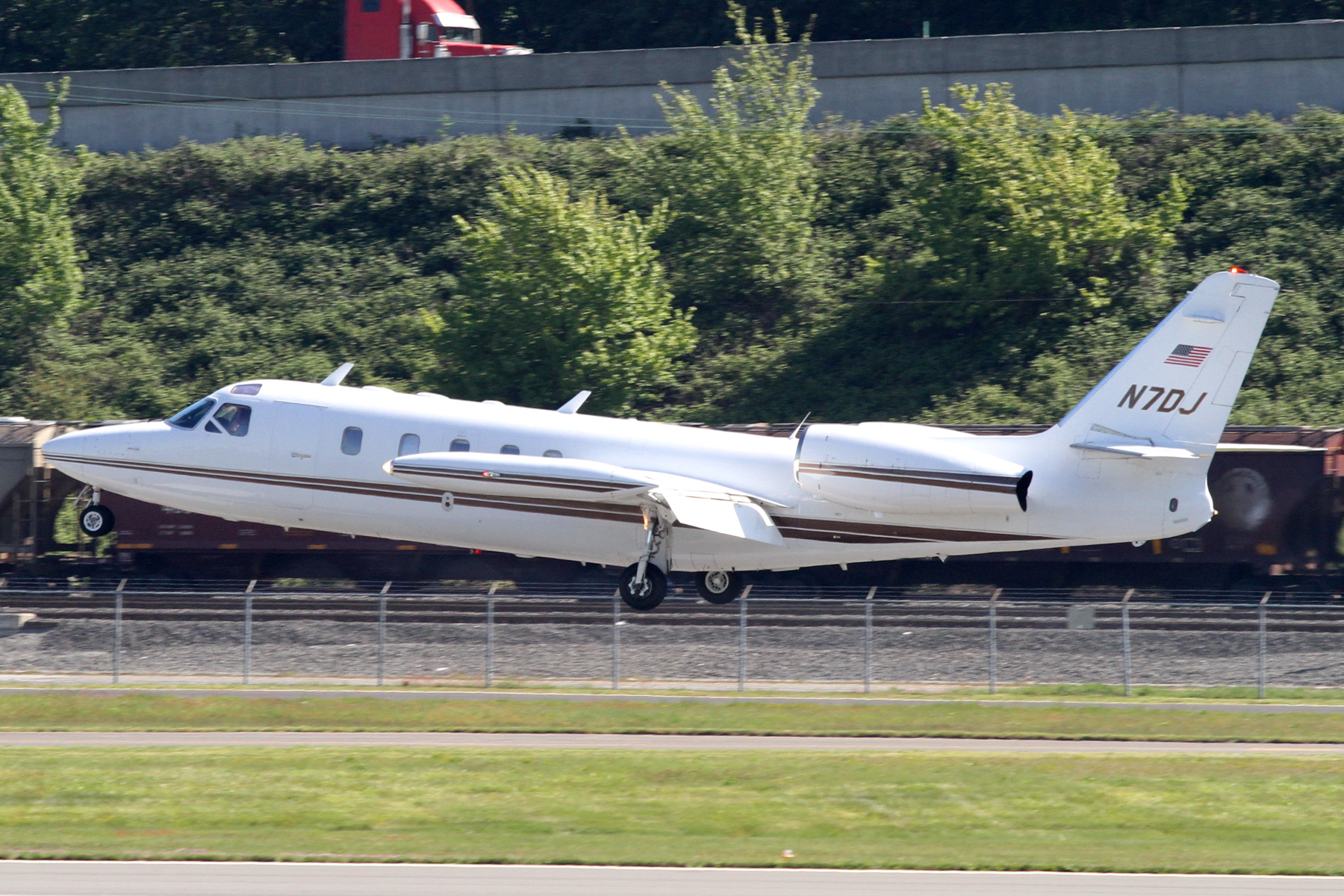
Aero Commander IAI Westwind / 1123 / 1124 / II Airplane Insurance
Aero Commander IAI Westwind / 1123 / 1124 / II Insurance Cost Examples
Pro Pilot and Experienced
| Coverage | Limits | Premium |
|---|---|---|
| Physical Damage | $400,000 Agreed Value | $7,000 |
| Aircraft Liability | $1,000,000 Per Occurrence | $3,000 |
| Total Annual Premium | $10,000 |
Owner Pilot and Experienced
| Coverage | Limits | Premium |
|---|---|---|
| Physical Damage | $400,000 Agreed Value | $9,000 |
| Aircraft Liability | $1,000,000 Per Occurrence | $4,000 |
| Total Annual Premium | $11,000 |
Owner Pilot and Experienced but less than 1,000TT
| Coverage | Limits | Premium |
|---|---|---|
| Physical Damage | $400,000 Agreed Value | $12,000 |
| Aircraft Liability | $1,000,000 Per Occurrence | $4,000 |
| Total Annual Premium | $16,000 |
Aircraft Summary
Our 1124 aircraft offers an optional 100-gallon extended-range fuel bladder to give it an even greater range than the 1123. Fuel and range data do not include this bladder, and it should be noted that neither the 1124 nor the 1 can be equipped with an APU.
With the acquisition of the Jet Commander rights from North American in 1967, IAI continued its production until 1969. Subsequently, the company embarked on a redesign and the Westwind was born. The 1123 was the first of the line and its design drew heavily from the 1121B, with notable upgrades such as a generous 22-inch fuselage stretch, increased thrust from larger CJ610-5 motors, and added convenience from wing tip tanks offering 196 gallons of fuel and an extended flight range of 600 miles.
The Garrett TFE-73103 motors of the 1124 give improved fuel efficiency, extending the range by approximately 200 miles more than the 1123 and providing greater gross weight. The 1124 also benefits from improved wing leading edges, landing gear, avionics and various systems. Notably absent compared to the 1123 are an APU, however the 1124 and 1 have been approved for RVSM via a Supplemental Type Certification since the first quarter of 2003.
The Westwind 2: Next Generation Performance and Features. Featuring the Sigma 1 Wing Mod, Winglets on Tip-Tanks, 100-Gallon Aft Baggage Fuel Bladder, Comfortable and Capacious Cabin Door, Airline-Style Flushing Lavatory, Extended Headroom, Enhanced Flight Control System (FDS-85 Flight Director & APS-80 Autopilot) and Approved for RVSM (Third Quarter of 2003).
Models We Cover
Valuation
The first model, the IAI Westwind 1124, is currently valued between $100,000 and $200,000. Israel Aircraft Industries built the first Westwind 1124 in 1971. They ended production in 1979. A total of 58 Westwind 1124s have been built. 15 are still in operation and 43 have been retired.
The price range of the IAI Westwind I is $180,000 to $395,000. Production of the Westwind I started in 1978 and stopped in 1988. There have been a total of 115 Westwind I’s. 54 have been retired, while 61 are still operating today.
The average price range of the Westwind II is $74,000 and $394,000. IAI has produced a total of 89 Westwind 2. 34 have been retired, and 55 are still in service.
Risk Areas
Claim History
The Aero Commander IAI Westwind / 1123 / 1124 / II has a good claim history. The Westwind 1124, in particular, had 25 hull-loss accidents with 47 fatalities. Most accidents involving this aircraft have been caused by pilot errors.
Some other common claims are FOD, hangar rash, hard landings, bird strikes, and runway overruns.
Safety Features
The two Honeywell TFE731-3-1G turbofans are safe and reliable. It benefits from being a twin engine because they are safer.
The Aero Commander IAI Westwind 1124 is suited with the Honeywell SPZ-8000 integrated digital avionics package. It has dual Collins VHF 22B, dual VIR 32, dual ADF 462, and dual DME 42. There are also three Laseref INS, dual FMS 800, and Honeywell WU 870 color weather radar.
The Westwind II’s cockpit is also equipped with the Collins FMS90 Flight Management System, dual Collins VHF 20A comms, and dual Collins VIR 30A navs. Dual DME FCS80 flight control system, the FDS85 flight director, the APS80 autopilot, and the RNS300 radar navigation system provide safety during flight.
Nevertheless, the highest safety trait for any aircraft is the training and experience of the pilot.
See our complete list of approved flight schools and Part 141 flight schools for more information.
